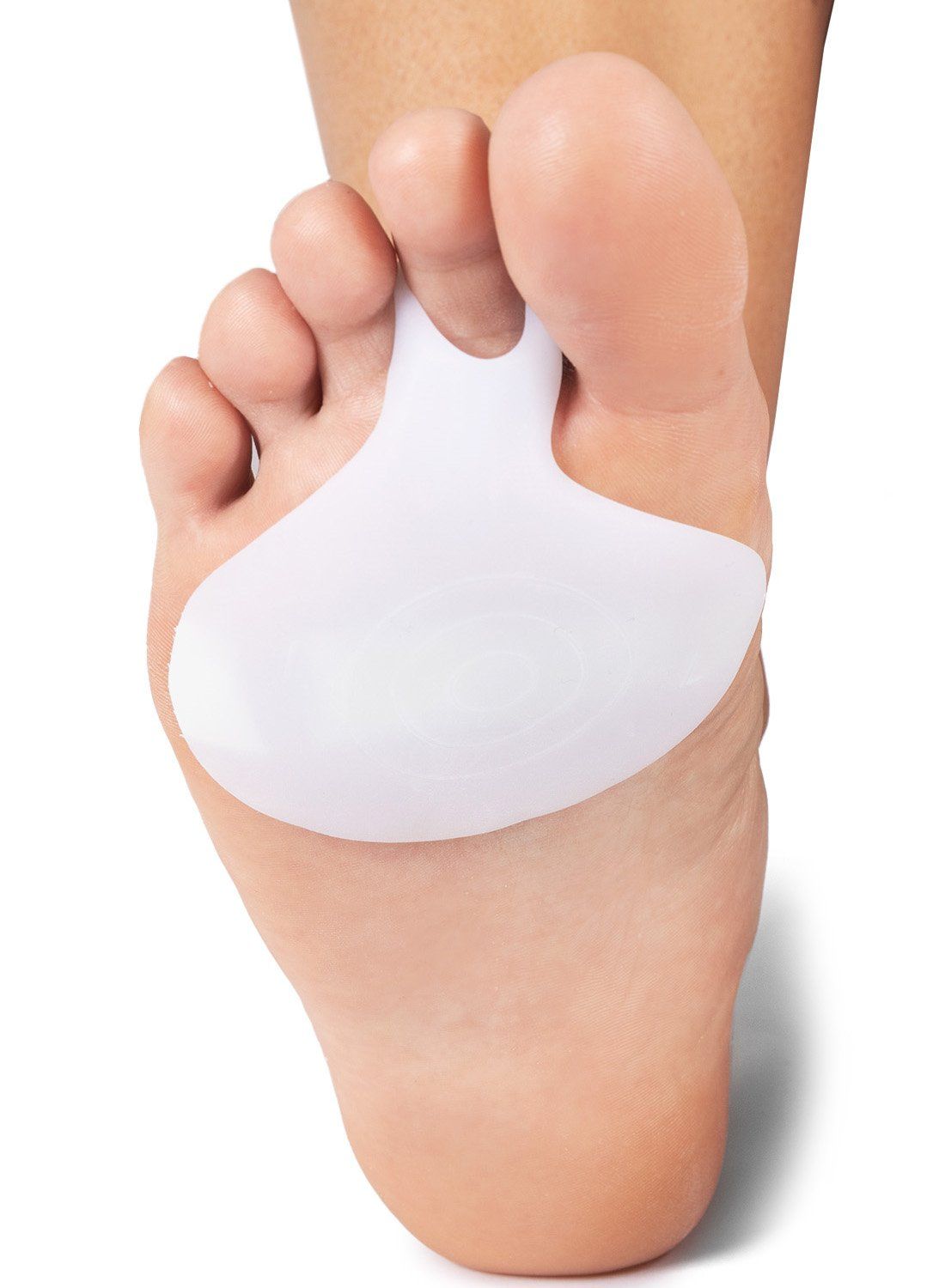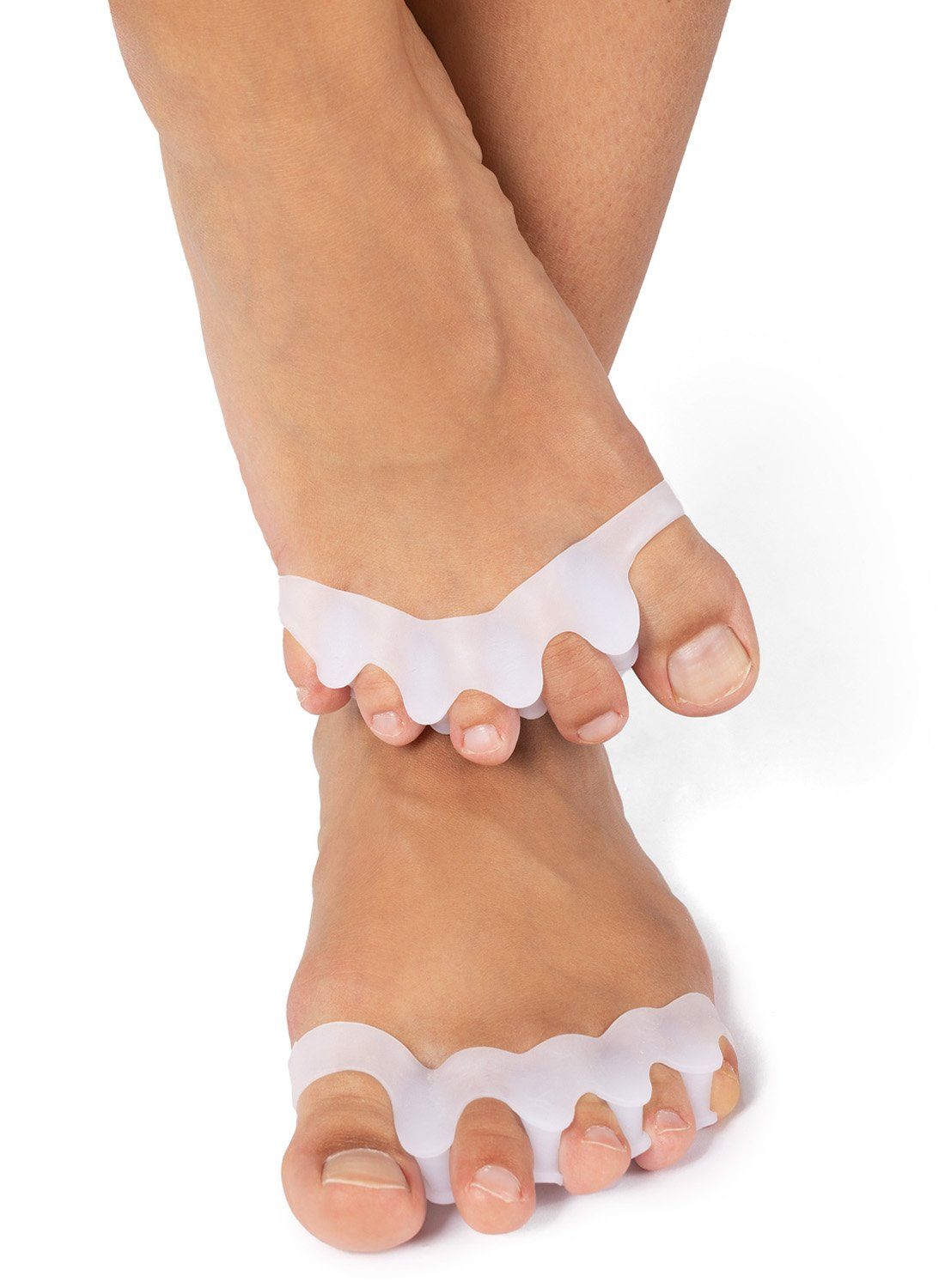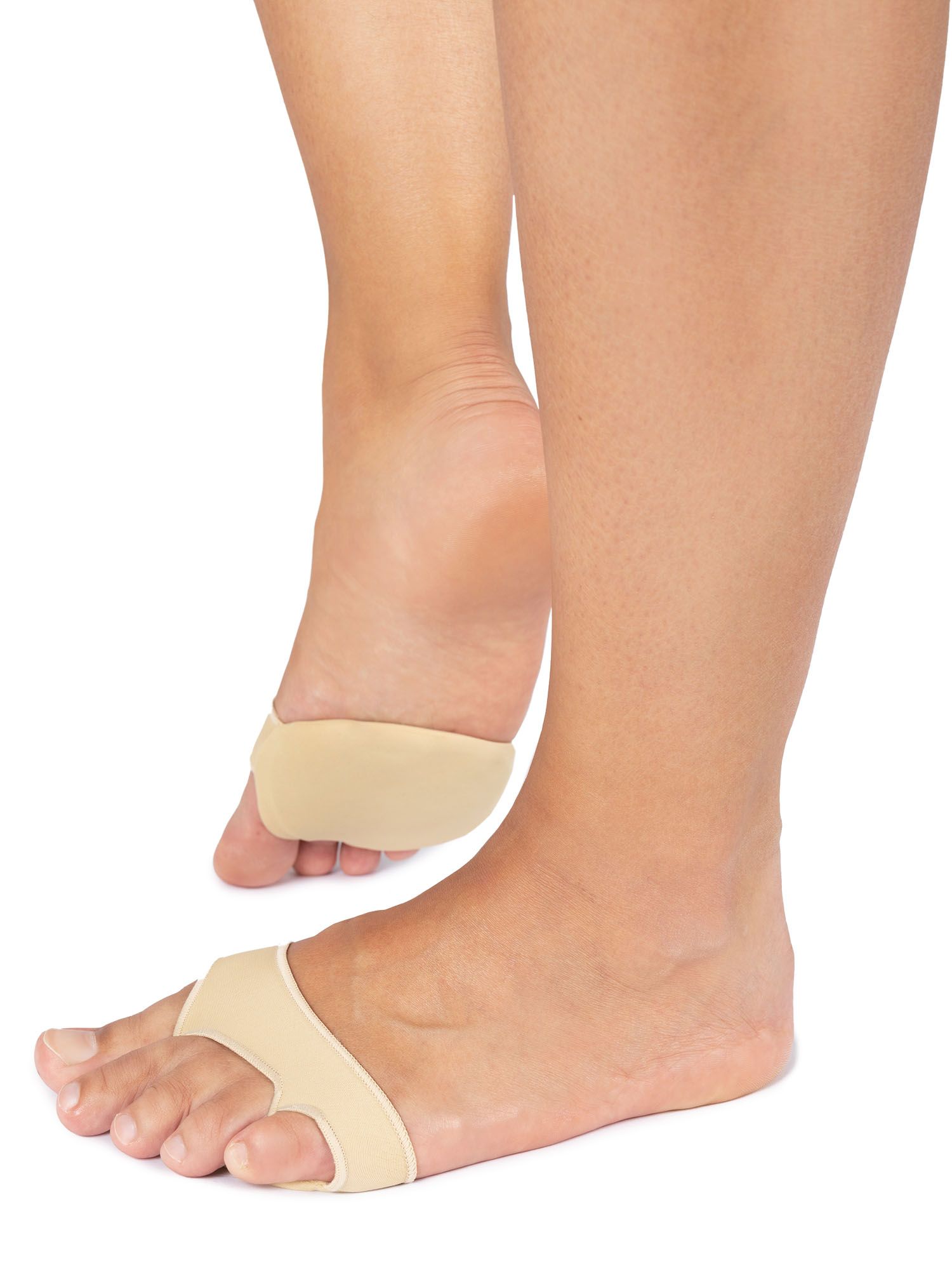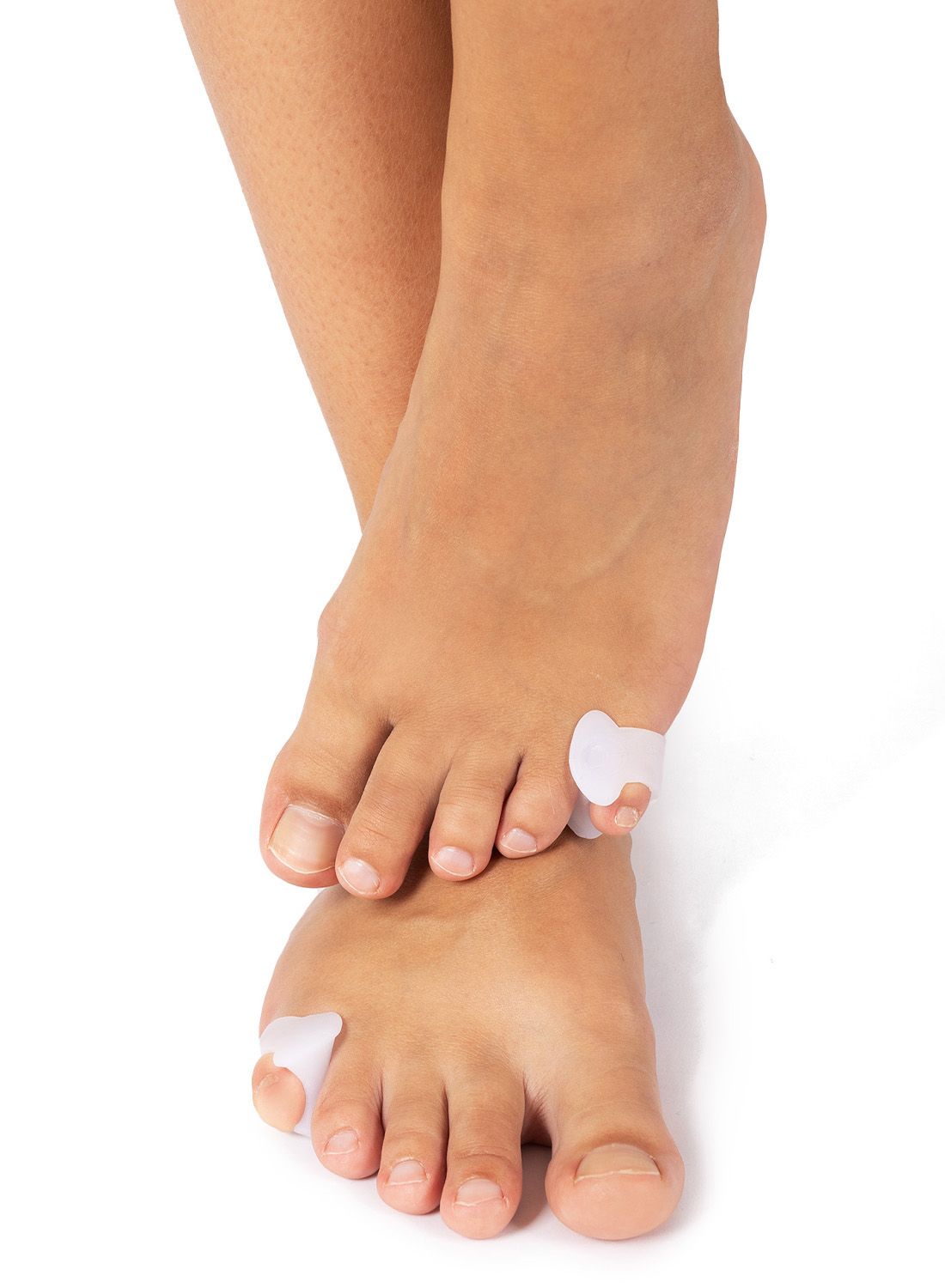Corns
A corn, also known as a callus bump, is a thickened area of skin that typically develops on or between the toes. When wearing shoes, the pressure from the footwear can push the corn into the skin, causing significant pain—especially while walking. While calluses are meant to protect the skin from friction and pressure, tight or ill-fitting shoes can have the opposite effect and press the callus painfully into the foot. Fortunately, there are solutions to help relieve the pain and prevent corns from developing. Below, we explain how.
How does a corn develop?
Corns form due to increased pressure on a specific area of the foot. This can happen from standing for long periods or performing repeated movements with the feet. Corns are more common in older adults, as the skin becomes thinner with age. Foot deformities can also contribute to corn formation.
Common causes of excess pressure include:
- Poorly fitting shoes or shoes that lack proper arch support
- Frequent use of high heels
- Being overweight, which adds more pressure to certain areas of the feet
- Foot or toe deformities, such as overpronation, hallux valgus, or flat feet
What are the symptoms of a corn?
Corns between or on the toes can cause various symptoms. The most common include:
- A rough patch of skin on or between the toes
- Swollen or inflamed toes
- Redness in the affected area
- Pain during physical activity or walking
- A firm, yellowish callus bump that feels hard to the touch
How can you treat a corn?
Corns can usually be treated at home with the right care and products. The first step is to wear proper footwear. Corns often develop when shoes are too tight and the toes don’t have enough space to move freely.
It’s also important to use proper insoles for support. Insoles don’t have to be custom-made or expensive. First, identify your foot type: do you have flat feet, overpronation, or underpronation? There are specific insoles designed for each type. The right insole will help distribute pressure more evenly and reduce the likelihood of developing corns.
Women who frequently wear high heels are more prone to calluses and corns. Try not to wear heels too often, or use high-heel insoles to better distribute the pressure.
It’s also essential to keep your feet clean and wear fresh socks. Excess callus buildup can be reduced by soaking your feet regularly and gently removing hardened skin with a callus remover. This helps eliminate dead skin cells that contribute to thickened skin.
If a toe deformity such as hallux valgus is present, consider using a toe corrector to help realign the toes. This can reduce pressure on specific areas and ease the discomfort caused by corns.
At the bottom of this page, our physiotherapists and podiatrists have selected several products to help treat corns. Take a look at your specific concern and choose the product that best fits your needs. With the right support, your corns could soon be a thing of the past.
Do you have any further questions?
If you have any other questions about corns, our products, or anything else, don’t hesitate to get in touch! Our team of specialists is here to help you.

Metatarsal Pads / Toe Cushions / Toe Protector (softgel) (per pair)

Metatarsal Pad with Toe Ring (softgel) (per pair)

Solelution Toe Separator for All Toes (per pair)

Solelution Metatarsal Pads (softgel)

Solelution Toe Separator with Ring Hallux Valgus (per pair)

Solelution - Little Toe Separator

- Physiotherapist
- Sports podiatrist
- Manual therapist
- Podopostural therapist
- Myofascial dry needling specialist


